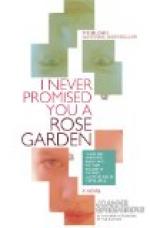My garden does not take kindly to this successive sowing, and I have gradually learned to control the flower-bearing period by difference in location. Spring, and in our latitude May, is the time of universal seed vitality, and seeds germinating then seem to possess the maximum of strength; in June this is lessened, while a July-sown seed of a common plant, such as a nasturtium or zinnia, seems to be impressed by the lateness of the season and often flowers when but a few inches high, the whole plant having a weazened, precocious look, akin to the progeny of people, or higher animals, who are either born out of due season or of elderly parents. On the other hand, the plant retarded in its growth by a less stimulating location, when it blooms, is quite as perfect and of equal quality with its seed-bed fellows who were transplanted at once into full sunlight.
Take, for example, mignonette, which in the larger gardens is always treated by successive sowings. A row sown early in April, in a sunny spot in the open garden and thinned out, will flower profusely before very hot weather, bloom itself out, and then leave room for some late, flowering biennial. That sown in the regular seed bed early in May may be transplanted (for this is the way by which large trusses of bloom may be obtained) early in June into three locations, using it as a border for taller plants, except in the bed of sweet odours, where it may be set in bunches of a dozen plants, for in this bed individuality may be allowed to blend in a universal mass of fragrance.
In order to judge accurately of the exact capabilities for shade or sunlight of the different portions of a garden, one must live with it, follow the shadows traced by the tree fingers on the ground the year through, and know its moods as the expressions that pass over a familiar face. For you must not transplant any of these annuals, that only live to see their sun father for one brief season, into the shade of any tree or overhanging roof, but at most in the travelling umbra of a distant object, such as a tall spruce, the northeastern side of a hedge, or such like.
In my garden one planting of mignonette in full sun goes in front of the March-planted sweet peas; of the two transplantings from the seed, one goes on the southwest side of the rose arbour and the other on the upper or northeast side, where it blooms until it is literally turned into green ice where it stands.
This manipulation of annuals belongs to the realm of the permanent resident; the summer cottager must be content to either accept the conditions of the garden as arranged by his landlord, or in a brief visit or two made before taking possession, do his own sowing where the plants are to stand. In this case let him choose his varieties carefully and spare his hand in thickness of sowing, and he may have as many flowers for his table and as happy an experience with the summer garden, even though it is brief, as his wealthy neighbour who spends many dollars for bedding plants and foliage effects that may be neither smelled, gathered nor familiarized.




